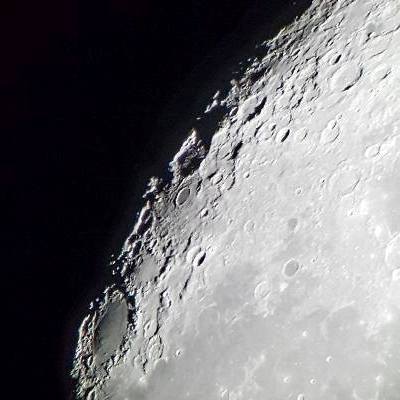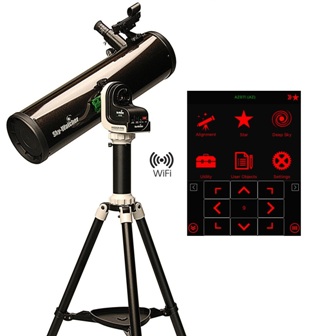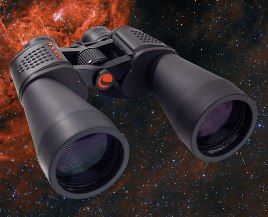
Buying a beginner Telescope for Astronomy
Here is your guide to buying the best stargazing Telescope - We have a range of high quality telescopes carefully selected to provide ease of use, fast setup with great views of the night sky at budgets to suit everyone. Every telescope is a genuine UK version with full warranty backed by our free lifetime technical support. We also have a range of Astronomy Gifts at great prices. See our latest Special offer Telescope deals and offers.
Consider a Smart Telescope as an all-in-one solution.
Our delivery charge is just £5.95 and we only use insured reputable carriers
Questions
Astronomy is a complex subject and hobby, the equipment is often very technical and compatability between products and brands can be daunting. We are happy to guide customers to the right products, Emails are responded to fast, we often reply to emails out of hours to.
What can you see?
Even the lowest priced instruments will easily reveal hundreds of craters on the Moon and will show Saturn's Rings, Jupiter's main belts and Moons as well as the polar ice caps on Mars. Larger models (over 80mm) will be better for fainter objects like galaxies and nebulae.
Show me some Telescopes!
Browse all Telescopes
Buying for youngsters
We only recommend telescopes for those 13 or older unless supervised by an adult
Keep it simple
Choose a Refractor on an AltAz mount or a Dobsonian if you want the easiest fastest setup
Taking photos
If you think astrophotography is a possibility choose an Equatorial or EQ mount. Read about astrophotography
Smart All In One Telescopes
Smart telescopes are easy to use with a built in goto and tracking system along with a sensitive sensor can be the all in one solution to taking great images. These incredible instruments work from your smartphone or tablet and will show, save and share your images.
Smart Telescopes
Bigger is better
The larger the telescope's mirror or lens the more light it gathers, meaning you will see more. A Dobsonian is a design that allows large optics on a simple mount, bigger mirror equals brighter views
Why not binoculars?
Binoculars are often recommended for beginners but there is a drawback, they are low magnification which is great for general views but....Virtually everybody who wants a telescope will want to see the moon and planets - only a telescope can do this, you need 50x or more to reveal detail
Viewing objects in the night sky
As a general rule telescopes under 80mm will give good views of the moon showing hundreds of craters and planets with Saturn's rings and Jupiter's cloud belts easily visible as well as some brighter galaxies and nebulae. Telescopes over 80mm aperture will start to show the deep sky objects brighter and larger - dont expect to see vivid colours that long exposure images show in magazines but you certainly can see wonderful views of the cosmos at the eyepiece. A telescope can show the colours and hues of stars themselves, some coloured double stars like Alberio are a distinct close pair in blue and orange.
Buy with confidence
We are a UK telescope specialist company established for over a decade supplying all the top brands at the best prices, a full UK warranty and free lifetime support is included with everything we sell
We have been awarded excellent ratings by our customers, please visit our Customer Reviews Page which is updated daily.

WiFi Telescopes
There are now many affordable WiFi Telescopes that can find and track via your Smartphone with free apps. This new breed of goto telescope allows anyone with a smartphone to control the telescope via the simple app to navigate to thousands of objects in the night sky.
Because your phone has location technology alignment is also simplified as the telescope then also has this data from your phone.
These telescopes do not need internet access, the telescope itself transmits its own WiFi network so you can use the instrument anywhere.
SkyWatcher WiFi Telescopes
Celestron WiFi Telescopes

Buying Binoculars for Astronomy
Binoculars cannot show the moon and planets close up like a telescope for several reasons, especially as they are not designed to provide high magnification.
Why binoculars?
What binoculars are extremely good at is giving a natural view with both eyes in addition to providing a very wide fields of view (often as much as 10 full moon diameters), in other words you see more sky area which generally will mean many more stars in the night sky.
For astronomy, binoculars fall into two catagories, hand held and tripod mounted. Hand held binoculars are great for casual observing in sizes up to around 50mm lenses with a magnification of 10x - going larger or higher power will be very difficult to hold steady. A good 10x50 binocular is perfect for hand held binocular astronomy with more than 50x the light gathering ability of the human eye. Under good skies there are numerous clusters, galaxies and nebulae within reach of 50mm binoculars.
Bigger is better
Larger aperture or giant binoculars are much more impressive with 70mm, 80mm, 100mm and even larger lenses with massive light grasp they can show a serious amount of detail including structure in galaxies and nebulae under good skies. With this size of binocular you need to use a tripod, thankfully virtually all binoculars can be easily fitted to photographic tripods which are portable and cost effective.
Useful links:
Binoculars section
Helios Fieldmaster 7x50 Binoculars BBC Sky at Night magazine 92% group test winner
Giant Binoculars
Binocular Tripods & Adapters
After sales advice & help
Please Email us with any questions - we respond to emails fast, often out of hours, we provide free lifetime technical support on everything we sell

